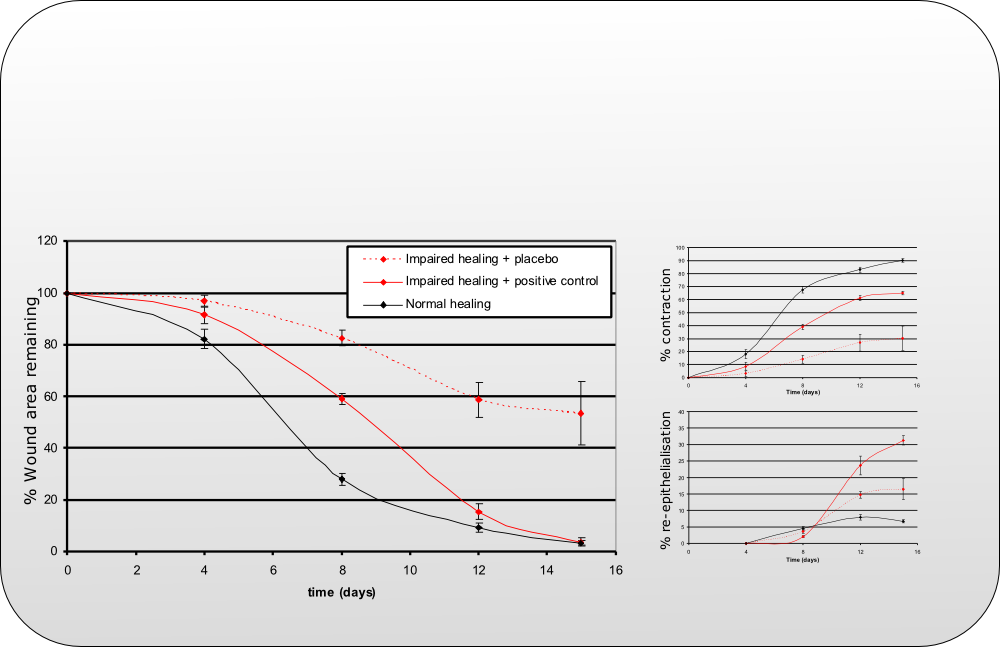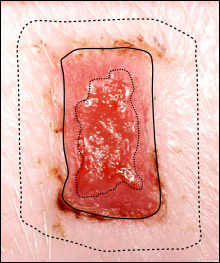

The impact of agents on wound closure is assessed using excisional wound models.
Wound closure, which is measured by computer-

Original wound area
Area closed by contraction
Healing Wound
Area closed by re-
Open wound area remaining

Data showing % wound area remaining (relative to the original wound area on day 0)
± s.e.m. for a diabetes-
The components of wound closure (% wound re-
Treatment with a growth factor combination therapy (positive control) demonstrates a positive modulation of both components .
Wound Planimetry
Diagram showing wound planimetry measurements in a normal wound healing model.